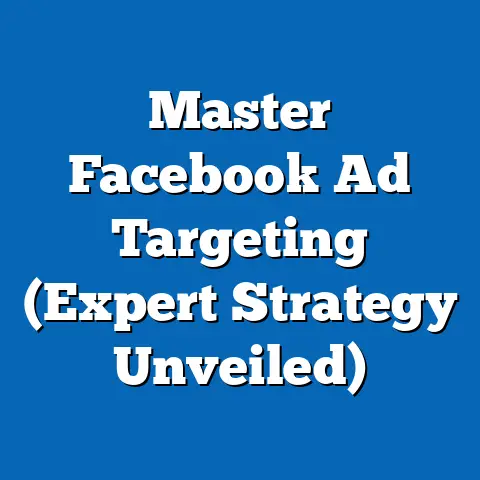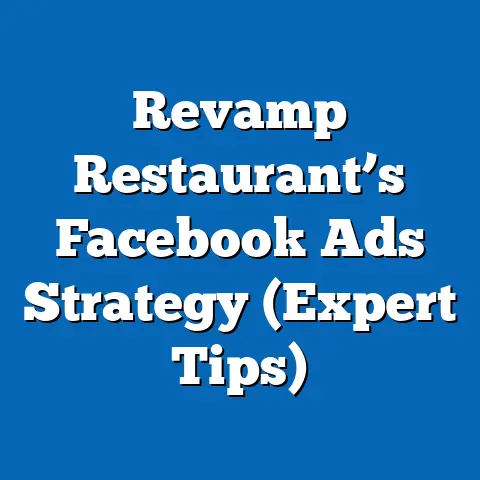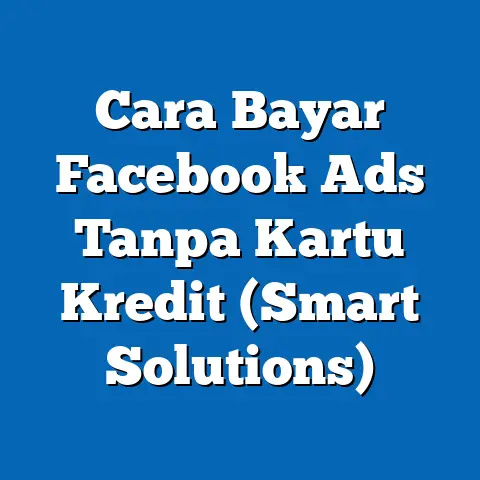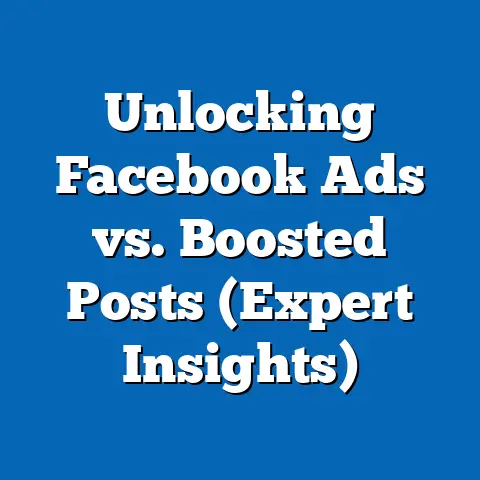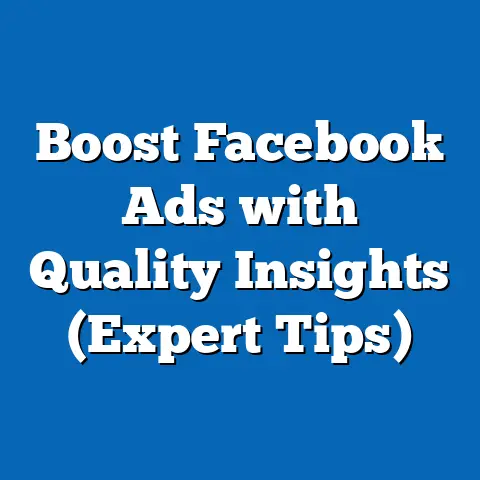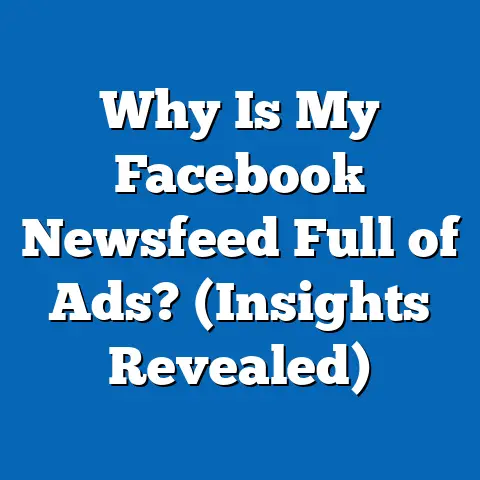Maximize Meta fb ad Support (Essential Email Strategies)
Understanding Meta’s Support Framework
Meta, the parent company of Facebook, provides a robust support framework for advertisers, and understanding how to leverage these resources is crucial for optimizing your campaigns, especially when promoting eco-conscious products or services. From community forums to personalized support, there are various avenues to explore.
Navigating Meta’s Support Channels
Meta offers a range of support options, including:
- Help Center: This is your first stop for troubleshooting and finding answers to common questions. It’s a vast repository of articles, guides, and FAQs covering everything from ad creation to policy compliance.
- Community Forums: Engage with other advertisers, share experiences, and seek advice from seasoned marketers. These forums can be invaluable for understanding best practices and staying up-to-date with the latest trends.
- Business Help Center: Tailored specifically for businesses, this resource provides guidance on managing your Facebook Business Page, setting up ad accounts, and navigating Meta’s advertising policies.
- Personalized Support: For more complex issues, Meta offers personalized support through email or chat. This option is typically available to advertisers with significant ad spend or those facing critical technical challenges.
Enhancing Ad Performance with Meta’s Resources
When promoting eco-conscious products or services, utilizing Meta’s resources can significantly enhance your ad performance. For instance, understanding Meta’s advertising policies related to environmental claims is crucial. You need to ensure that your ads are not only accurate but also compliant with regulations regarding greenwashing or misleading environmental claims.
I remember a time when a client of mine, a sustainable fashion brand, had their ad disapproved due to a vague claim about their products being “eco-friendly.” After consulting Meta’s advertising policies and refining the ad copy to provide specific details about the sustainable materials used and the ethical manufacturing processes, we were able to get the ad approved and saw a significant improvement in engagement.
Meta’s Algorithms and Meaningful Engagement
Meta’s algorithms favor businesses that engage meaningfully with their audience. This is particularly important for brands aiming to foster a sustainable image. By creating ads that spark conversations, encourage user-generated content, and promote community involvement, you can signal to Meta that your brand is genuinely committed to building relationships with its audience.
Takeaway: Familiarize yourself with Meta’s support framework and leverage its resources to optimize your ad campaigns, ensure policy compliance, and foster meaningful engagement with your audience.
Building Your Email List for Targeted Outreach
Having a robust email list is an invaluable asset for any marketing strategy, and it’s especially crucial when targeting an eco-conscious audience. Email marketing allows you to connect with your audience on a more personal level, nurture leads, and drive conversions.
The Significance of a Robust Email List
An email list is more than just a collection of email addresses; it’s a direct line of communication with potential customers who have expressed interest in your brand. Unlike social media, where your reach is often limited by algorithms, email marketing gives you the ability to deliver your message directly to the inboxes of your subscribers.
Ethical Methods for Collecting Email Addresses
Transparency and ethical practices are paramount when collecting email addresses, especially when targeting an eco-conscious audience. Here are some effective methods:
- Offer Incentives: Provide valuable content, such as e-books, guides, or exclusive discounts, in exchange for email sign-ups.
- Use Opt-In Forms: Embed opt-in forms on your website, blog, and social media pages, making it easy for visitors to subscribe to your email list.
- Host Webinars and Events: Collect email addresses during registration for webinars, online workshops, and in-person events.
- Run Contests and Giveaways: Encourage email sign-ups as part of the entry requirements for contests and giveaways.
- Communicate Your Eco-Conscious Mission: Clearly articulate your brand’s commitment to sustainability and how your products or services contribute to a greener future.
Segmenting Your Email List
Segmenting your email list based on interests and behaviors allows you to deliver targeted messages that resonate with specific groups of subscribers. For an eco-conscious audience, consider segmenting your list based on:
- Product Preferences: Segment subscribers based on the types of sustainable products they’ve purchased or expressed interest in.
- Environmental Concerns: Segment subscribers based on their specific environmental concerns, such as climate change, deforestation, or plastic pollution.
- Engagement Levels: Segment subscribers based on their level of engagement with your emails, identifying your most active and loyal subscribers.
Takeaway: Build a robust email list through ethical methods, emphasizing transparency and communicating your eco-conscious mission. Segment your list to deliver targeted messages that resonate with specific groups of subscribers.
Crafting Compelling Email Content
Creating engaging email content that resonates with an eco-conscious audience is essential for building trust, fostering relationships, and driving conversions. Your emails should not only promote your products or services but also educate, inspire, and empower your subscribers to make sustainable choices.
Storytelling: Sharing Your Brand’s Sustainability Journey
Storytelling is a powerful tool for connecting with your audience on an emotional level. Share your brand’s sustainability journey, highlighting the challenges you’ve overcome, the milestones you’ve achieved, and the impact you’re making on the environment.
I’ve found that sharing behind-the-scenes stories about our sustainable sourcing practices or the positive impact of our eco-friendly initiatives can be incredibly effective in building trust and fostering deeper connections with our audience.
Using Visuals to Enhance Appeal
Visuals can significantly enhance the appeal of your emails, making them more engaging and memorable. Consider using:
- Infographics: Create visually appealing infographics that highlight the environmental benefits of your products or services.
- Images of Sustainable Practices: Showcase images of your sustainable manufacturing processes, eco-friendly packaging, or community involvement initiatives.
- Videos: Share videos that tell your brand’s sustainability story, feature customer testimonials, or provide tips for living a more sustainable lifestyle.
Tips for Writing Engaging Email Content
- Use a Conversational Tone: Write in a friendly, approachable tone that makes your subscribers feel like they’re talking to a friend.
- Focus on Benefits, Not Features: Highlight the benefits of your products or services, emphasizing how they can help your subscribers live a more sustainable lifestyle.
- Include a Clear Call to Action: Tell your subscribers exactly what you want them to do, whether it’s visiting your website, making a purchase, or sharing your content on social media.
- Personalize Your Emails: Use your subscribers’ names and tailor your messages to their specific interests and preferences.
- Proofread Carefully: Ensure that your emails are free of typos, grammatical errors, and factual inaccuracies.
Takeaway: Craft compelling email content that resonates with an eco-conscious audience by sharing your brand’s sustainability journey, using visuals to enhance appeal, and following best practices for writing engaging emails.
Leveraging Email Automation
Email automation is a game-changer for maximizing efficiency and maintaining personalized communication, especially for eco-focused campaigns. By setting up automated email sequences, you can nurture leads, promote recurring engagement, and drive conversions without manually sending each email.
The Role of Email Automation
Email automation allows you to create a series of pre-written emails that are automatically sent to subscribers based on specific triggers or actions. This can include welcome emails, onboarding sequences, abandoned cart reminders, and promotional campaigns.
Automated Email Sequences for Eco-Focused Campaigns
Here are some examples of automated email sequences that can be effective for eco-focused campaigns:
- Welcome Sequence: Introduce new subscribers to your brand, share your sustainability story, and provide a discount code for their first purchase.
- Product Spotlight Sequence: Showcase your sustainable products or services, highlighting their environmental benefits and unique features.
- Educational Sequence: Provide valuable content about sustainability, such as tips for reducing waste, conserving energy, or supporting eco-friendly initiatives.
- Abandoned Cart Sequence: Remind subscribers about items they’ve left in their cart and offer a discount or free shipping to encourage them to complete their purchase.
- Re-engagement Sequence: Reach out to inactive subscribers with a special offer or exclusive content to re-ignite their interest in your brand.
Timing and Frequency in Email Campaigns
Timing and frequency are crucial factors in the success of your email campaigns. You want to send emails at times when your subscribers are most likely to open and engage with them, without overwhelming them with too many messages.
I’ve found that sending emails in the mid-morning or early afternoon on weekdays tends to yield the best results, as many people check their email during these times. However, it’s important to test different sending times and frequencies to see what works best for your audience.
Takeaway: Leverage email automation to maximize efficiency and maintain personalized communication. Set up automated email sequences that nurture leads, promote recurring engagement, and drive conversions. Pay close attention to timing and frequency to optimize your email campaigns.
Analyzing and Optimizing Your Email Campaigns
Data analysis is the backbone of any successful marketing strategy, and email marketing is no exception. By tracking key metrics, analyzing your results, and making data-driven adjustments, you can continuously improve your email campaigns and maximize your ROI.
Key Metrics to Track
Here are some key metrics to track when analyzing your email campaigns:
- Open Rate: The percentage of subscribers who opened your email.
- Click-Through Rate (CTR): The percentage of subscribers who clicked on a link in your email.
- Conversion Rate: The percentage of subscribers who completed a desired action, such as making a purchase or filling out a form.
- Bounce Rate: The percentage of emails that could not be delivered to the recipient’s inbox.
- Unsubscribe Rate: The percentage of subscribers who unsubscribed from your email list.
A/B Testing for Eco-Conscious Messaging
A/B testing, also known as split testing, is a powerful technique for determining what resonates best with your audience. By creating two versions of an email with slight variations and sending them to a segment of your list, you can see which version performs better in terms of open rates, CTR, and conversions.
I highly recommend A/B testing different subject lines, email copy, visuals, and calls to action to see what resonates best with your eco-conscious audience. For example, you could test whether a subject line that emphasizes the environmental benefits of your product performs better than one that focuses on the product’s features.
Strategies for Refining Email Strategies
- Analyze Your Data: Regularly review your email metrics to identify trends, patterns, and areas for improvement.
- Segment Your List: Segment your list based on engagement levels, purchase history, and other relevant factors to deliver targeted messages.
- Personalize Your Emails: Use your subscribers’ names and tailor your messages to their specific interests and preferences.
- Test Different Approaches: Experiment with different subject lines, email copy, visuals, and calls to action to see what resonates best with your audience.
- Stay Up-to-Date: Keep abreast of the latest trends and best practices in email marketing to ensure that your campaigns are effective and relevant.
Takeaway: Analyze and optimize your email campaigns by tracking key metrics, A/B testing your content, and refining your strategies based on data-driven insights.
Conclusion
In conclusion, effective email strategies are an integral part of maximizing Meta’s support for your Facebook ads, especially when promoting eco-conscious initiatives. By building a robust email list, crafting compelling content, leveraging email automation, and analyzing your results, you can drive engagement, build community, and achieve your marketing goals. Remember, email marketing is not just a tool for promotion; it’s a vital component of building a community around shared values and fostering lasting relationships with your audience. As you continue your journey of aligning your marketing efforts with sustainability, embrace the power of email marketing to make a meaningful impact and achieve lasting success in the Facebook advertising landscape.
I encourage you to share your experiences with email strategies in relation to Facebook ads, especially in the context of promoting eco-conscious initiatives. Let’s learn from each other and build a community of marketers who are committed to making a positive impact on the planet.

